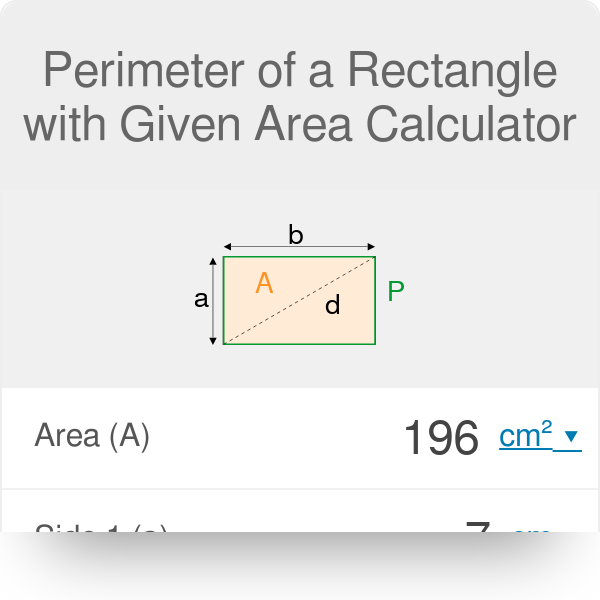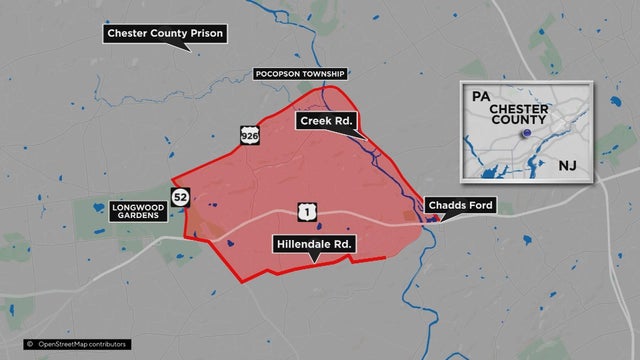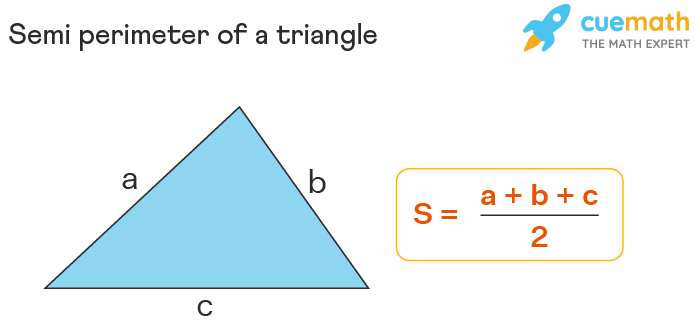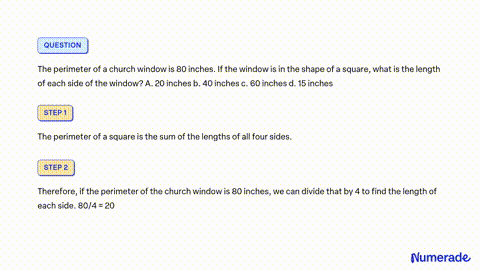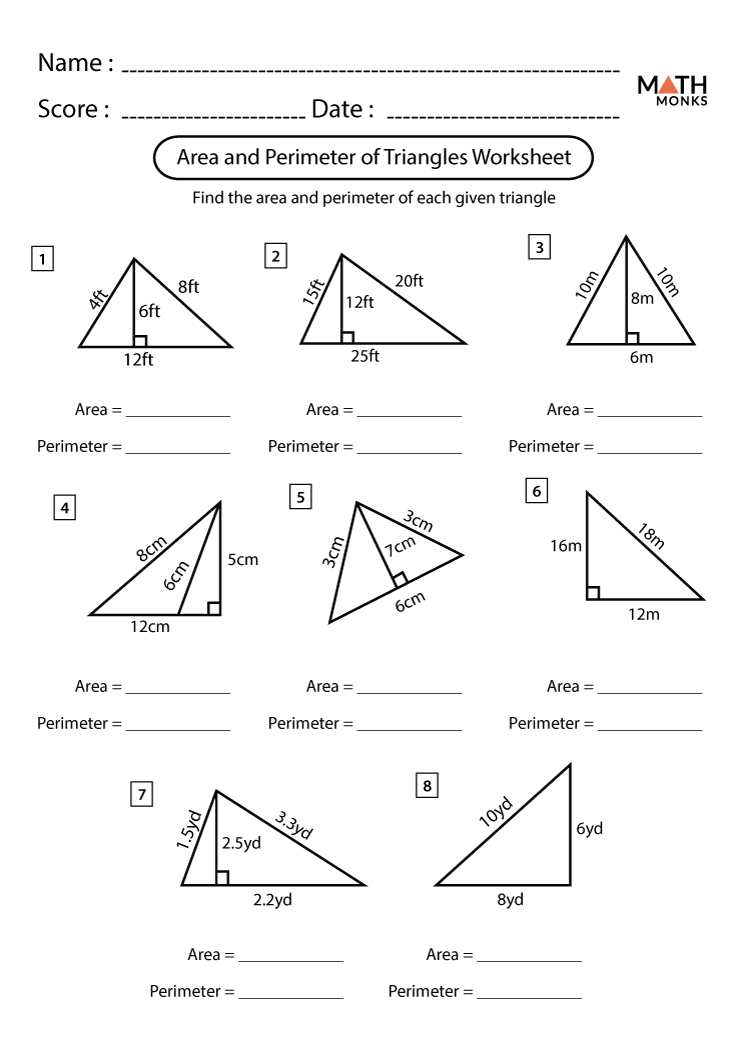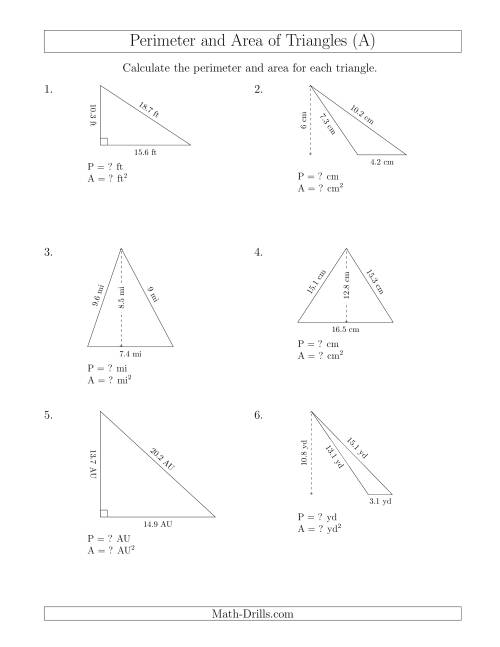Topic perimeter of rectangle from area: Discover the intriguing world of geometry in our comprehensive guide, "Perimeter of Rectangle from Area," where we unravel the mysteries of calculating perimeters using area, enriching your mathematical journey with practical insights and easy-to-follow examples.
Table of Content
- How to calculate the perimeter of a rectangle from its area?
- Basic Concept of Perimeter and Area of a Rectangle
- Formula for Calculating Perimeter from Area and One Side
- Step-by-Step Process to Find the Perimeter from Area
- Examples and Problem Solving
- YOUTUBE: Find Area and Perimeter of Rectangle
- Applications of Perimeter in Real-World Scenarios
- Common Misconceptions and How to Avoid Them
- Advanced Concepts: Perimeter with Diagonal, Angle, and Circumcircle Radius
- Interactive Problems and Quizzes for Practice
- FAQs: Clarifying Common Queries
How to calculate the perimeter of a rectangle from its area?
To calculate the perimeter of a rectangle from its area, follow these steps:
- Determine the length and width of the rectangle.
- Use the formula for the area of a rectangle: Area = Length x Width.
- Solve the equation to find either the length or the width, depending on which one is given.
- Once you have the length and width, calculate the perimeter using the formula: Perimeter = 2 x (Length + Width).
Let\'s take an example for better understanding:
Example: The area of a rectangle is 20 m2 and the length is 4 m. Find the perimeter.
- Given: Area = 20 m2, Length = 4 m
- Use the formula for area to find the width: Area = Length x Width
- Solve for width: 20 = 4 x Width
- Width = 20/4 = 5 m
- Now that we have the length (4 m) and width (5 m), we can calculate the perimeter:
| Length | Width | Perimeter |
|---|---|---|
| 4 m | 5 m | 2 x (4 + 5) = 2 x 9 = 18 m |
So, the perimeter of the rectangle with an area of 20 m2 and a length of 4 m is 18 m.
READ MORE:
Basic Concept of Perimeter and Area of a Rectangle
The perimeter of a rectangle is a measure of the total distance around its four sides. It is the sum of its length (l) and width (w), calculated using the formula P = 2(l + w). The area of a rectangle, on the other hand, is a measure of the space enclosed within its four sides, calculated by multiplying its length and width (A = lw).
Understanding the relationship between the area and the perimeter of a rectangle is crucial for various applications in geometry. For instance, in constructing a rectangular swimming pool, the perimeter defines the length of the swimming races, while the area determines the space available for swimming.
To find the perimeter of a rectangle when only its area and one of the sides (either length or width) is known, one can rearrange the area formula to find the missing dimension and then apply the perimeter formula. For example, if the area (A) and length (l) are known, the width (w) can be found using w = A/l, and then the perimeter is calculated.
This knowledge is not only practical in architectural designs and construction but also enriches creative projects, such as decorating the border of a rectangular canvas. It is also used in everyday scenarios, like calculating the fencing needed for a rectangular field or garden.
Engaging with these formulas opens up a world of geometric exploration, allowing learners and practitioners to apply mathematical concepts in real-life situations effectively.
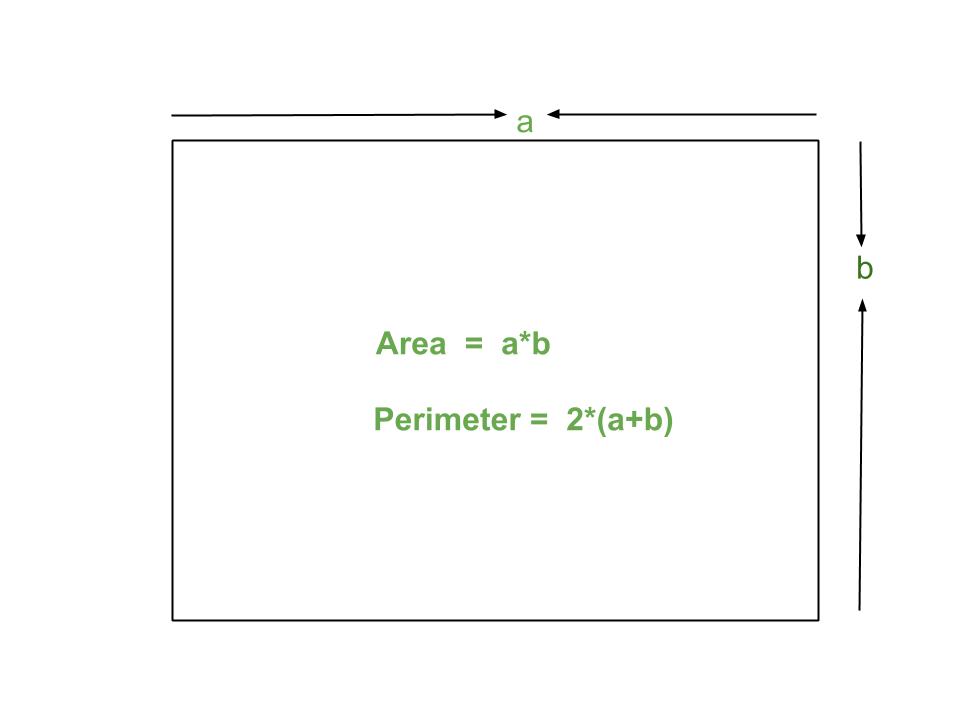
Formula for Calculating Perimeter from Area and One Side
To calculate the perimeter of a rectangle when you know its area and one side, you can use specific formulas. The area of a rectangle is calculated as A = length × width. The perimeter, represented as P, is the sum of all four sides of the rectangle and can be calculated as P = 2 × (length + width).
If the length (L) is known, the width (W) can be calculated by rearranging the area formula: W = Area / L. Once you have both dimensions, insert them into the perimeter formula: P = 2 × (L + W).
Conversely, if the width is known and you need to find the length, use the formula: Length = Area / Width. With the length and width identified, the perimeter is found using the same perimeter formula.
These formulas are fundamental in various geometric calculations and are crucial for solving real-world problems, such as designing spaces or constructing objects with specific dimensions.
- To find the width from the perimeter and length, use: Width = Perimeter / 2 - Length.
- For finding the length, use: Length = Perimeter / 2 - Width.
This approach is practical and versatile, allowing for the determination of missing dimensions and enabling efficient planning and execution of projects involving rectangular shapes.

Step-by-Step Process to Find the Perimeter from Area
Finding the perimeter of a rectangle from its area involves a few straightforward steps. It\"s important to remember that the perimeter is the total distance around the rectangle, and the area is the space enclosed within it.
- Know the Formulas: The area of a rectangle is given by A = length × width, and its perimeter is P = 2 × (length + width).
- Identify Known Measurements: To find the perimeter from the area, you need to know either the length or the width of the rectangle, in addition to the area.
- Calculate Missing Dimension: If the width is known, find the length using the formula Length = Area / Width. If the length is known, use Width = Area / Length.
- Plug in the Values: Once you have both dimensions (length and width), substitute them into the perimeter formula: P = 2 × (Length + Width).
- Calculate the Perimeter: Perform the calculation to find the perimeter.
- Unit Consistency: Ensure that the units for length and width are consistent. The perimeter will be in the same linear unit (e.g., meters, feet).
This process is not only useful in mathematical problems but also practical in real-world scenarios, such as determining the amount of fencing needed for a rectangular area or calculating the border length for a garden plot.
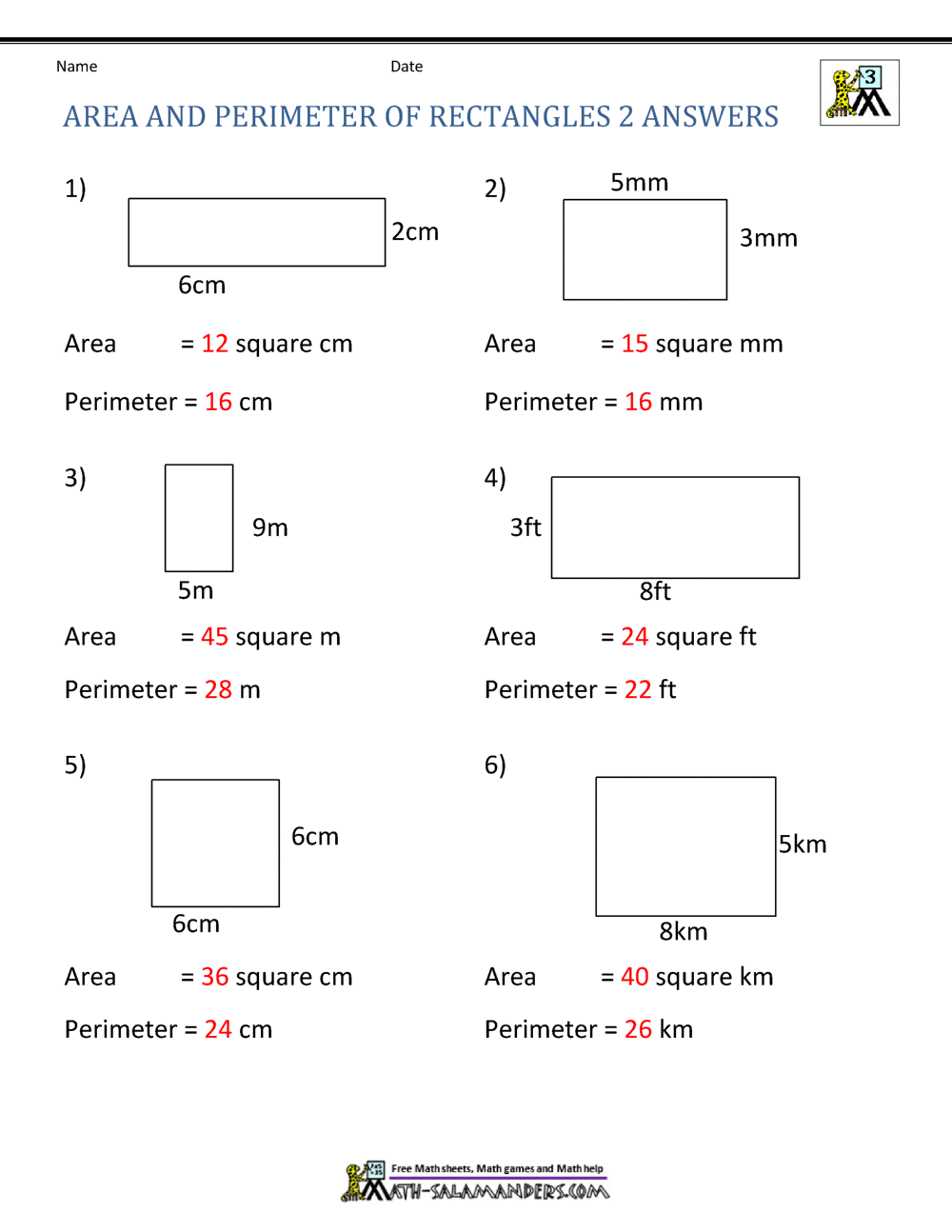
Examples and Problem Solving
Understanding the concept of calculating the perimeter of a rectangle from its area is best demonstrated through examples. These examples will guide you through the process step-by-step, enhancing your problem-solving skills.
- Example 1:
- Consider a rectangle with an area of 100 square units and a width of 10 units. To find the perimeter:
- First, calculate the length: Length = Area / Width = 100 / 10 = 10 units.
- Then, use the perimeter formula: Perimeter = 2 × (Length + Width) = 2 × (10 + 10) = 40 units.
- Example 2:
- A rectangular garden has an area of 200 square meters and a length of 20 meters. The perimeter can be calculated as follows:
- Find the width: Width = Area / Length = 200 / 20 = 10 meters.
- Calculate the perimeter: Perimeter = 2 × (Length + Width) = 2 × (20 + 10) = 60 meters.
- Example 3:
- Imagine a rectangular room with an area of 180 square feet and a width of 15 feet. The steps to find the perimeter are:
- Determine the length: Length = Area / Width = 180 / 15 = 12 feet.
- Compute the perimeter: Perimeter = 2 × (Length + Width) = 2 × (12 + 15) = 54 feet.
These examples illustrate the practical application of the perimeter formula in various contexts, from gardening to room layout planning. Remember, the key is to find the missing dimension using the area and then apply the perimeter formula.

_HOOK_
Find Area and Perimeter of Rectangle
\"Discover the beauty and versatility of the humble rectangle in our captivating video! Watch as we unravel the secrets behind its perfectly balanced proportions and geometric precision, leaving you in awe of its endless possibilities.\"
Applications of Perimeter in Real-World Scenarios
The concept of perimeter, particularly in relation to rectangles, plays a vital role in various real-world applications. Understanding how to calculate the perimeter from the area of a rectangle can be beneficial in numerous practical situations.
- Architecture and Construction: In building design, knowing the perimeter of rooms or land plots is essential for planning layouts, installing fencing, and calculating the amount of materials needed for construction.
- Interior Design: Calculating the perimeter can help determine how much paint, baseboard, or crown molding is required for a room.
- Agriculture: Farmers use perimeter calculations to determine the fencing required for a rectangular field or plot.
- Sports: In sports fields and tracks, the perimeter determines the boundary lengths for games and races.
- Craft and Fabrication: The perimeter measurement is crucial in tailoring and craftwork, especially when cutting borders or framing materials.
- Event Planning: Perimeter calculations help in setting up event spaces, ensuring the area is properly utilized and decorated.
- Education: Teaching the concept of perimeter in schools helps students understand spatial relationships and enhances their problem-solving skills.
- Environmental Planning: Perimeter measurements are used in planning gardens, parks, and other outdoor spaces, optimizing the use of available land.
These applications show how the perimeter of rectangles is not just a theoretical concept but a practical tool used in diverse fields, from construction to environmental planning.
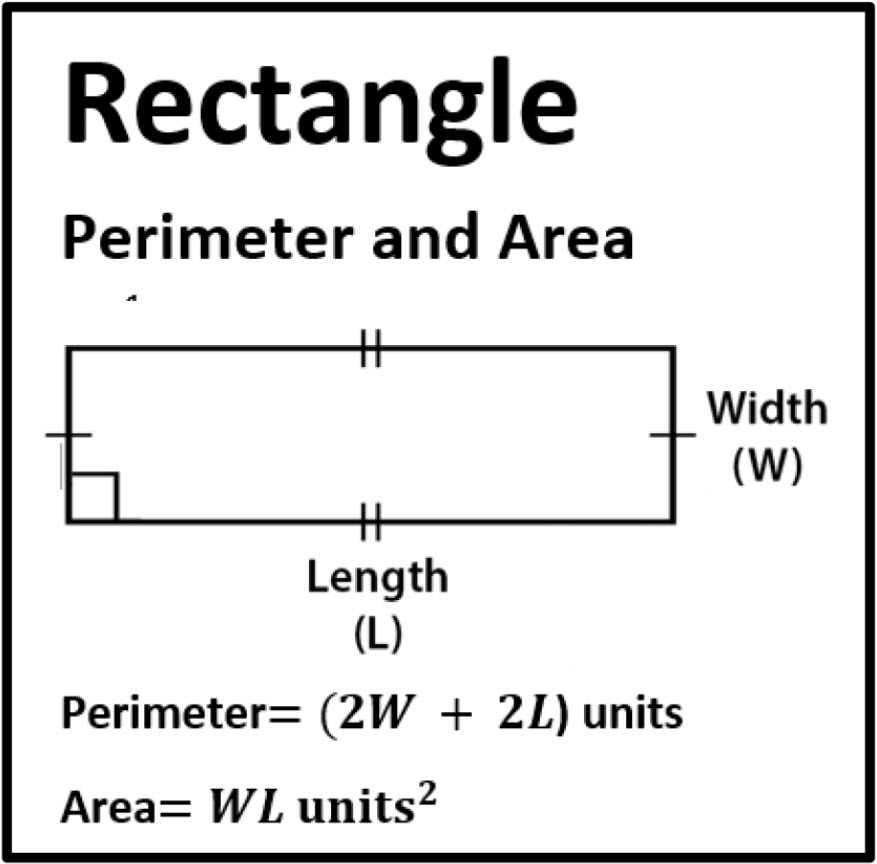
Find Area and Perimeter of Rectangle
\"Unlock the secrets of calculating the perimeter in our captivating video! Join us as we delve into the world of shapes and explore how to find the total distance around them. Get ready to see math in a whole new light!\"
Common Misconceptions and How to Avoid Them
When learning about the perimeter of a rectangle and its relation to the area, it\"s common to encounter certain misconceptions. Understanding and addressing these misconceptions is crucial for accurate problem-solving.
- Misconception 1: The perimeter is directly proportional to the area.
- Clarification: The perimeter and area of a rectangle are related but not directly proportional. The perimeter is the sum of all sides, while the area is the product of length and width. Changing one can affect the other, but not always in a proportional manner.
- Misconception 2: All rectangles with the same area have the same perimeter.
- Clarification: Rectangles with the same area can have different perimeters. The dimensions (length and width) can vary, leading to different perimeter values.
- Misconception 3: The formula for perimeter and area is the same.
- Clarification: The formulas for perimeter and area are distinct. The perimeter is calculated using P = 2(l + w), while the area is A = l × w.
- Misconception 4: Units of perimeter and area are interchangeable.
- Clarification: Perimeter is measured in linear units (like meters, feet), while area is measured in square units (like square meters, square feet).
Avoiding these common misunderstandings enhances comprehension and application of these concepts in both academic and real-world scenarios.

Advanced Concepts: Perimeter with Diagonal, Angle, and Circumcircle Radius
Exploring the perimeter of a rectangle can extend into more advanced concepts such as calculations involving the diagonal, angles, and circumcircle radius. These elements introduce more complex geometry but offer a deeper understanding of the properties of rectangles.
- Perimeter with Diagonal:
- If the length/width and diagonal of a rectangle are known, the perimeter can be calculated using the formula: P = 2 × length + 2 × (diagonal² - length²)½ or P = 2 × width + 2 × (diagonal² - width²)½.
- Perimeter with Angle:
- When the length/width and an angle of a rectangle are given, the perimeter can be determined using trigonometric functions. For example, P = 2 × length + tan(α/2) × 2 × length or P = 2 × width + tan(α/2) × 2 × width, where α is the angle.
- Perimeter with Circumcircle Radius:
- The perimeter calculation becomes more complex when involving the circumcircle radius. Formulas like P = 2 × length + 2 × (4 × radius² - length²)½ are used where the radius is a factor in determining the rectangle\"s perimeter.
- Diagonal and Area:
- In some scenarios, you might have the diagonal and area of the rectangle. In such cases, the perimeter can be calculated using a complex formula involving these two values.
These advanced calculations are more complex than standard perimeter formulas and often require a solid understanding of geometry and trigonometry. They are particularly useful in fields like architecture, engineering, and advanced mathematics.
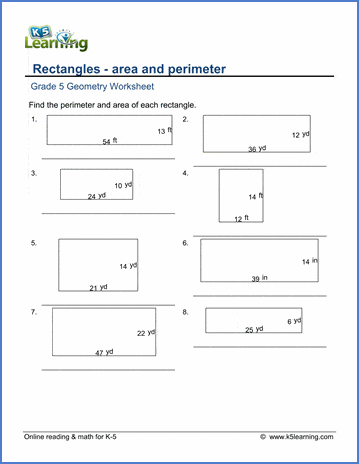
Interactive Problems and Quizzes for Practice
Welcome to our interactive section for practicing the calculation of the perimeter of a rectangle from its area. Here, you will find various problems and quizzes to enhance your understanding and skills.
Practice Problems
- Calculate the perimeter of a rectangle with an area of 24 square units and a length of 6 units.
- Determine the perimeter of a rectangle where the width is 5 units and the area is 45 square units.
- Find the perimeter of a rectangle with a diagonal of 10 units and an area of 48 square units.
Interactive Quizzes
Test your knowledge with these quizzes. Each quiz adjusts its difficulty based on your previous answers, providing a personalized learning experience.
| Quiz | Description | Difficulty Level |
| Quiz 1 | Basic perimeter calculations | Easy |
| Quiz 2 | Perimeter with given area and one side | Medium |
| Quiz 3 | Advanced problems involving diagonals and angles | Hard |
Remember, practice makes perfect! Good luck!

